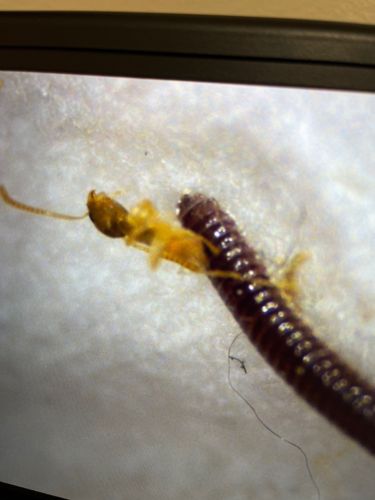Subterranean Termite (worker and soldier castes visible)
Scientific Name: Reticulitermes spp. (likely)
Order & Family: Blattodea, Rhinotermitidae (Family)
Size: Workers: 3-5 mm (0.12-0.2 inches); Soldiers: 4-6 mm (0.16-0.24 inches)

Natural Habitat
They typically live in underground colonies and build tunnels (mud tubes) to access food sources above ground. They require moisture and are often found in damp wood or soil.
Diet & Feeding
Cellulose, found in wood, paper, fabric, and other plant-based materials. Workers are responsible for foraging and feeding the entire colony.
Behavior Patterns
Termites are social insects that live in colonies, often numbering in the millions. They build elaborate nests in soil, wood, or mounds. They are known for their hidden foraging habits, tunneling through wood from the inside out, making damage less apparent until it is significant. Their life cycle involves an egg, nymph, and adult stage.
Risks & Benefits
Risks: Significant pests that can cause extensive and costly damage to wooden structures, homes, and furniture. They compromise the structural integrity of buildings. Benefits: In natural ecosystems, termites play a role in breaking down dead wood and plant matter, contributing to nutrient cycling in the soil.
Identified on: 9/4/2025